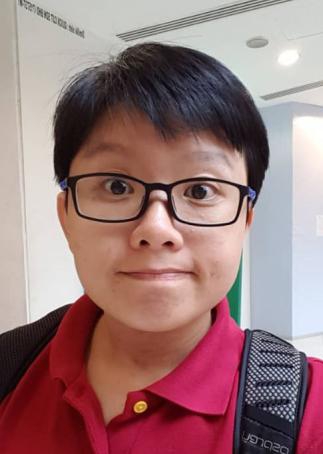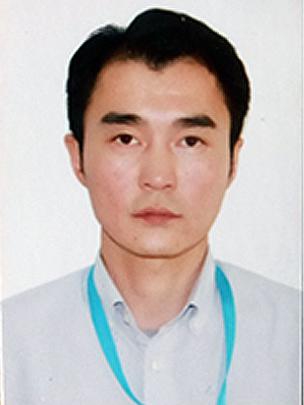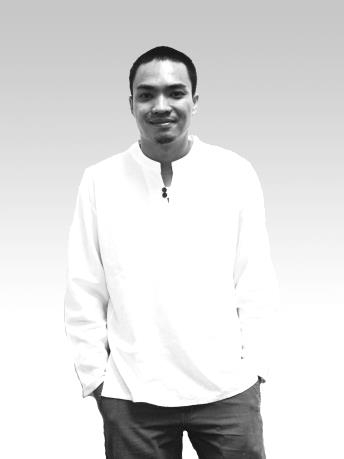The trainees all have professional backgrounds related to heritage management. After finishing the lectures and site work in the first week, they were expected to rethink the cases that they participated in before and to share their own experience.
Based on their presentations and the comments provided by the resource persons, we found several interesting points and came up with some questions to conduct interviews with the trainees. The following paragraphs are transcripts of some interviews.
Scope of the HIA
George Town World Heritage and the Case of Sia Boey
Xinyi NG (Malaysia)
Q: You raised the question concerned with the scope of HIA, both spatial and temporal. I am wondering in your case, from your professional experience, what information and factors do you think are necessary for the process of defining the scope?
A: I think setting is very important. My role is a site manager, and we deal with the ancient site, so if the HIA is applied to our site, I think during the early preparation of the HIA process, we should be involved and allowed to give our input. Every case is different; actually, I’ve written my report. For example, the case I presented, Sia Boey, triggered all things because of the archaeological findings. However, according to our guideline, currently archaeology is not in the scope. The guideline only regulates the visual impacts in terms of the roofscape and the streetscape; it’s all about things above the ground, not under the ground. So I think in this case, it could be better if we can give our input before they sign the contract or before they write the terms of reference. If this input could be incorporated, the HIA will be more holistic and more comprehensive so that a better result can be delivered.
International Co-operation
Current State of the Choijin Lama Temple Museum, Ulaanbaatar, Mongolia
Tsetsenbileg MAGSARJAV (Mongolia)
Q: In your presentation, I saw two Korean organizations that helped you to create a 3D map of the exterior and interior of the Choijin Lama Temple. What I am curious about is the outcomes of this cooperation work. Were there any problems or issues that might have been neglected before, and how did this technology help you identify them?
A: They are not two organizations. Actually, they are two departments under the “National Research Institute of Cultural Heritage” of South Korea. They not only helped us in terms of the 3D scanning technology, but also some workshops organized during their staying there. The 3D map contributed to find out things we had never known before, such as which material the structure made of, what damages appeared since last renovation, and so on. Besides, there were some things w had never touched, and during the scanning we moved some of them away to scan the temple wall, so we could see where was much more damaged and figure out the cracks we didn’t notice before.
Moreover, documenting is one of the basic steps of protecting cultural heritage. By documenting it, you could leave the data to the next generation, so they can study it and do researches. It is necessary because in the future, it is highly possible that there will be changes made to the structure, maybe not only by humans but also by the nature. Therefore, the data can be referred to, revealing how it was before.
It is fair to say there are a lot of benefits. Specialists in our organization learned from Korean colleagues on the protection of similar architecture as well as scanning of the structures. They gave us presentations about how things were done to the buildings in the current situation in Korea, which provided us with a lot of information about how they worked on site. In addition, we generated a report together so that both authorities and the general public could get relevant information, and it also can raise the public consciousness of heritage protection.
Inspiration for the Future Work
Landscape Plant and Cultural Heritage: Case of Chiang Mai Old City
Warong WONGLANGKA (Thailand)
Q: I read that in the future you will conduct two major projects, namely, “Assessing value in Landscape Plants” and the “Landscape Plants: Impact Assessment on OUV”. Is there something that you’ve learned during this training course that can inspire or be of some help for you to carry out these two projects?
A: I think if you talk about the impact before I studied this class, I mentioned the impact of environment, EIA. Besides, in terms of landscape architecture that I study, I think the visual impact also can be the problem for the design that we have to concern. However, heritage impact is more than environmental and visual impacts. Heritage has meaning, significance, and value. It has spirit. Plant is just one aspect in the landscape. There are also other aspects such as material and quality of the space and landscape. Landscape can connect with people and culture. So I think after I learned this class, issues especially in terms of the intangible aspect, for example, spiritual values, history, aesthetics, and religion, are the kind of things that we have to concern.

Xinyi NG

Tsetsenbileg MAGSARJAV

Warong WONGLANGKA
(All the photos of interviewees provided by themselves)





